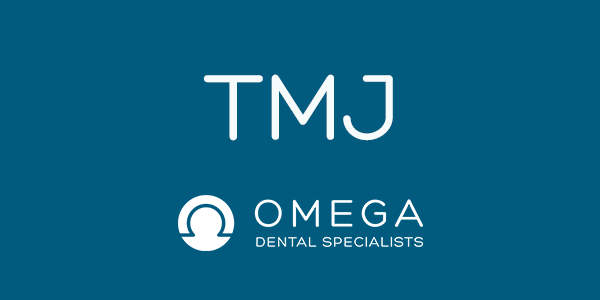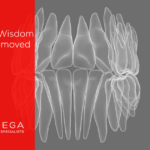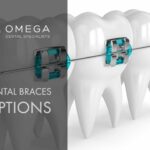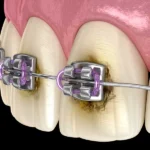Temporomandibular Joint Disorders

Understanding Temporomandibular Joint Disorders (TMD)
The temporomandibular joints (TMJs) connect your lower jaw to your skull and allow you to chew, speak and yawn. When these joints and the muscles surrounding them don’t work properly, the result is called a temporomandibular disorder (TMD). TMDs are a heterogeneous group of more than 30 conditions that cause pain, clicking or locking of the jaw and difficulty moving the mouth.
TMDs affect an estimated 5 – 12 % of adults and are more common in women, with a female‑to‑male ratio of about 3‑to‑1 ([TMJ Disorders: Symptoms & Treatment](https://my.clevelandclinic.org/health/diseases/15066-temporomandibular-disorders-tmd-overview#:~:text=Temporomandibular%20Disorders%3A%20Rapid%20Evidence%20Review,Epidemiology%20and%20Risk%20Factors)). Risk factors include different types of arthritis (rheumatoid or osteoarthritis), jaw injury, habits such as gum chewing or clenching your teeth, connective‑tissue diseases and stress ([TMJ disorders – Symptoms and causes](https://www.mayoclinic.org/diseases-conditions/tmj/symptoms-causes/syc-20350941#:~:text=TMJ%20disorders%20,Risk%20factors)). Certain behaviors – chewing on pens or ice, poor posture, taking large bites of food or using your teeth as tools – can make TMD symptoms worse ([TMJ Disorders: Symptoms & Treatment](https://my.clevelandclinic.org/health/diseases/15066-temporomandibular-disorders-tmd-overview#:~:text=TMJ%20Disorders%3A%20Symptoms%20%26%20Treatment,TMD%20causes)).
Common Causes of TMD
- Jaw injury: A blow to the jaw or whiplash injury can damage the joint structures.
- Bruxism (teeth grinding or clenching): Night‑time or daytime clenching puts pressure on the joints and muscles.
- Arthritis: Rheumatoid or osteoarthritis can lead to inflammation and degeneration in the TMJs ([TMJ disorders – Symptoms and causes](https://www.mayoclinic.org/diseases-conditions/tmj/symptoms-causes/syc-20350941#:~:text=TMJ%20disorders%20,Risk%20factors)).
- Bite misalignment: An improper bite can strain the joints and muscles.
- Stress or anxiety: High stress levels can cause you to tighten jaw muscles, aggravating symptoms.
- Connective‑tissue diseases: Conditions such as fibromyalgia or ankylosing spondylitis may be associated with TMD ([TMJ disorders – Symptoms and causes](https://www.mayoclinic.org/diseases-conditions/tmj/symptoms-causes/syc-20350941#:~:text=TMJ%20disorders%20,Risk%20factors)).
Recognizing TMD Symptoms
TMD symptoms can vary widely. Some people experience mild discomfort, while others have debilitating pain. Common signs include:
- Pain or tenderness in the jaw, face or neck.
- Aching pain around or inside the ear ([TMJ disorders – Symptoms and causes](https://www.mayoclinic.org/diseases-conditions/tmj/symptoms-causes/syc-20350941#:~:text=TMJ%20disorders%20,Risk%20factors)).
- Difficulty chewing or an uncomfortable bite sensation.
- Clicking, popping or grating sounds when opening or closing the mouth.
- Locking of the joint, making it hard to open or close the mouth.
- Headaches or neck pain associated with jaw movement.
If you notice persistent or worsening symptoms, seek evaluation from a dental or medical professional.
Diagnosing TMD
Diagnosis starts with a thorough medical and dental history and a physical examination of the jaw, face and neck. Your dentist or oral surgeon will check for tenderness, clicking, popping or difficulty moving the jaw. Imaging studies, such as dental X‑rays, CT scans or MRI, may be used to evaluate joint structures and rule out other conditions.
Conservative Treatment and Self‑Care
Most TMD cases improve with conservative, non‑surgical care. Experts recommend avoiding treatments that permanently change the jaw or bite because there is limited evidence they help ([TMD (Temporomandibular Disorders)](https://www.nidcr.nih.gov/health-info/tmd#:~:text=There%20are%20three%20main%20classes,of%20TMDs)). Initial treatment often includes:
- Self‑care: Eat soft foods, avoid wide yawning and gum chewing, and apply heat or ice to the jaw muscles to ease symptoms ([TMD (Temporomandibular Disorders)](https://www.nidcr.nih.gov/health-info/tmd#:~:text=There%20are%20three%20main%20classes,of%20TMDs)). Practice good jaw posture by resting your tongue gently on the roof of your mouth, keeping your teeth slightly apart and your jaw relaxed ([TMJ disorders – Diagnosis and treatment](https://www.mayoclinic.org/diseases-conditions/tmj/diagnosis-treatment/drc-20350945#:~:text=,help%20are%20not%20well%20understood)).
- Oral splints or mouth guards: A soft or hard night guard worn over the teeth can reduce clenching and relieve joint strain ([TMJ disorders – Diagnosis and treatment](https://www.mayoclinic.org/diseases-conditions/tmj/diagnosis-treatment/drc-20350945#:~:text=,help%20are%20not%20well%20understood)).
- Pain relief medications: Over‑the‑counter NSAIDs (such as ibuprofen) or prescription anti‑inflammatories can ease pain and inflammation. In some cases, muscle relaxants or low‑dose tricyclic antidepressants are prescribed.
- Physical therapy: Jaw exercises and stretches can help improve range of motion and reduce muscle tension. Therapists may also use ultrasound or other modalities.
- Stress management: Techniques like mindfulness meditation, deep breathing, yoga or counseling can reduce stress and jaw tension.
Medical Treatments
If conservative care does not relieve symptoms, additional treatments may be considered:
- Injections: Corticosteroid injections can reduce inflammation in the joint. In some cases, botulinum toxin (Botox) injections may relieve muscle spasm and pain, although this use is not FDA‑approved and should be considered only after other options are tried.
- Arthrocentesis: A minimally invasive procedure where fluid is flushed through the joint to reduce inflammation and improve mobility.
- Arthroscopy or open‑joint surgery: Reserved for severe cases where there is structural damage that cannot be managed conservatively. Surgery carries risks and should only be undertaken after thorough discussion with a surgeon.
Most people with TMD do not need surgery. Symptoms often improve with time and conservative therapy.
Lifestyle Tips to Prevent Flare‑Ups
- Avoid chewing gum and eating hard or chewy foods.
- Don’t use your teeth as tools to open packages or bite non‑food objects.
- Maintain good posture; slouching can strain the jaw muscles ([TMJ Disorders: Symptoms & Treatment](https://my.clevelandclinic.org/health/diseases/15066-temporomandibular-disorders-tmd-overview#:~:text=TMJ%20Disorders%3A%20Symptoms%20%26%20Treatment,TMD%20causes)).
- Take small bites and chew evenly on both sides of your mouth.
- Be mindful of clenching or grinding your teeth; if you clench during the day, place your tongue between your teeth to train your muscles to relax.
- Incorporate regular exercise and stress‑reducing practices into your routine.
When to Seek Professional Help
Consult a dentist, oral surgeon or orofacial pain specialist if you have:
- Pain that doesn’t improve with self‑care or persists for more than a few weeks.
- Difficulty opening or closing your mouth.
- Jaw locking or severe clicking that interferes with chewing.
- Changes in your bite or inability to chew properly.
- Symptoms accompanied by headaches, earaches or neck pain.
Early evaluation can help prevent chronic problems and improve quality of life.
Expert TMJ Care in Houston
If you live in Houston and are struggling with TMJ symptoms, our team at Omega Dental is here to help. We provide comprehensive TMJ evaluations and offer customized treatment plans ranging from conservative therapies to advanced interventions. Our experienced oral surgeons and dentists focus on relieving pain, restoring function and preventing future flare‑ups. Because TMDs can mimic or overlap with other conditions, it’s important to get a correct diagnosis and individualized care.
Ready to find relief? Book a TMJ consultation in Houston today and take the first step toward a more comfortable life.
Additional Resources
- Invisalign Cost in Houston – Learn about clear aligner pricing if you’re considering orthodontic treatment.
- Cost of Braces in Houston – Explore different types of braces and their cost ranges.
- Invisalign vs. Traditional Braces – Compare treatment options and find the best fit for your smile.





